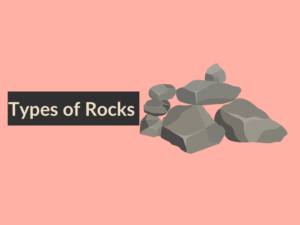What is SIAL?
SIAL stands for “Continental crust,” which refers to the rocks forming the Earth’s continents. It is composed mainly of lighter rocks such as granite and sedimentary rocks. These rocks are less dense and have a higher silica content compared to rocks found in the oceanic crust, known as SIMA.
Examples of SIAL
- The Appalachian Mountains in North America
- The Himalayas in Asia
- The Andes in South America
- The Alps in Europe
Uses of SIAL
SIAL has various uses, including:
- Providing a stable platform for building infrastructure
- Supporting agriculture with fertile soil
- Hosting mineral resources such as gold, silver, and copper
- Serving as a habitat for diverse ecosystems
What is SIMA?
SIMA stands for “Oceanic crust,” which is the rock portion underlying the ocean floor. It is mainly composed of basalt and gabbro, which are denser and have a lower silica content compared to SIAL.
Examples of SIMA
- The Pacific Ocean Basin
- The Atlantic Ocean Basin
- The Indian Ocean Basin
- The Arctic Ocean Basin
Uses of SIMA
SIMA serves various purposes, including:
- Providing a basis for seafloor mapping and exploration
- Hosting hydrothermal vents supporting unique ecosystems
- Playing a role in plate tectonics and the formation of volcanic islands
- Containing resources like oil, natural gas, and manganese nodules
Differences between SIAL and SIMA
| Difference Area | SIAL | SIMA |
|---|---|---|
| Density | Less dense | Denser |
| Silica Content | Higher | Lower |
| Main Rock Types | Granite and sedimentary rocks | Basalt and gabbro |
| Location | Forming continents | Underlying ocean floor |
| Thickness | Thicker | Thinner |
| Usage | Infrastructure, agriculture, mineral resources | Seafloor mapping, exploration, plate tectonics, resources |
| Examples | Appalachian Mountains, Himalayas | Pacific Ocean Basin, Atlantic Ocean Basin |
| Continuity | Continuously connected, forming landmasses | Divided by ocean basins |
| Ecosystem | Diverse with varied plant and animal life | Supports unique marine ecosystems |
| Volcanic Activity | Less frequent | More frequent with volcanic island formation |
Conclusion:
In summary, SIAL and SIMA differ in terms of density, silica content, rock types, location, thickness, usage, examples, continuity, ecosystem, and volcanic activity. SIAL forms the Earth’s continents, has a higher density and silica content, and provides a stable platform for various activities. On the other hand, SIMA makes up the oceanic crust, is denser and has a lower silica content, and is involved in plate tectonics and seafloor exploration.
People Also Ask:
Here are some common questions related to SIAL and SIMA:
1. What is the main difference between SIAL and SIMA?
SIAL refers to the continental crust, while SIMA represents the oceanic crust. The main difference lies in their composition and location.
2. Why is SIAL less dense than SIMA?
SIAL is less dense because it is composed of lighter rocks such as granite and sedimentary rocks. In contrast, SIMA is denser due to the presence of basalt and gabbro.
3. Can SIAL and SIMA coexist?
Yes, they can. The continental crust (SIAL) and oceanic crust (SIMA) interact at convergent boundaries where tectonic activity causes the collision and subduction of plates.
4. Which crust is more prone to volcanic activity?
SIMA, or the oceanic crust, is more prone to volcanic activity. This is because it is thinner and experiences more dynamic processes such as subduction and the formation of volcanic arcs.
5. What are the economic implications of SIAL and SIMA?
SIAL is economically significant as it provides resources like minerals, fertile soil for agriculture, and a stable foundation for infrastructure. SIMA contributes to the economy through resources like oil, natural gas, and manganese nodules found in the ocean floor.


